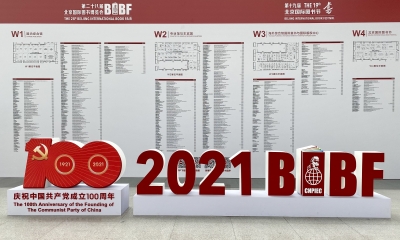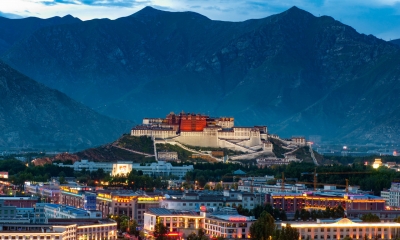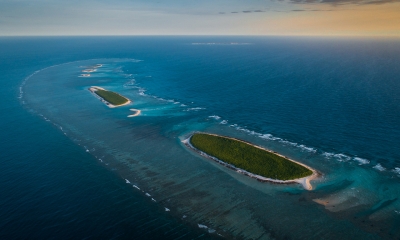Horgos, Xinjiang: The New Asia-Europe Bridgeway
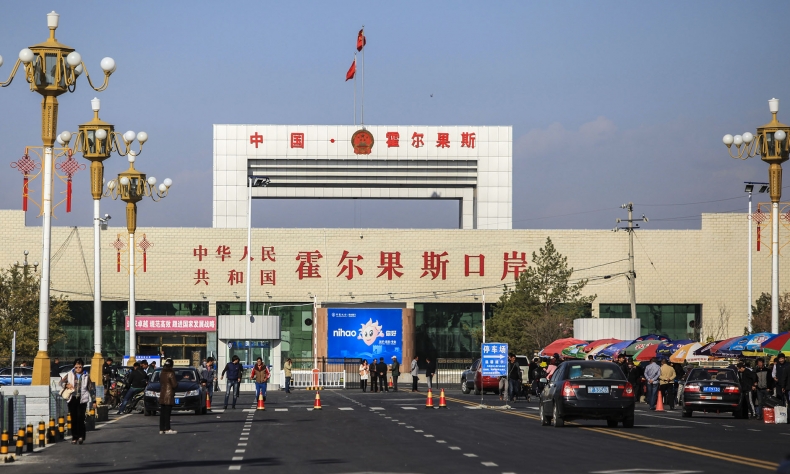
If you missed Shenzhen and Shanghai, you can’t miss Horgos. Mega infrastructure projects have transformed this once forgotten baron land into a beacon of trade and commercial activity once again.
If you were to ask somebody where the city of Horgos is, most would likely be unable to tell you which country it is in let alone point it out on a map. Naturally, they would of be forgiven because Horgos (sometimes called Khorgos), is quite literally in the middle of nowhere.
Located in the Xinjiang Uighur Autonomous Region on China’s Western border with Kazakhstan, it is just a stone’s throw away from the Eurasian Pole of Inaccessibility, the farthest point on earth from an ocean. While Horgos’ location will of course always remain, its status as a remote backwater border town is quickly changing.
Horgos’ journey began in 2013 when the then township was earmarked to become a major trade junction along China’s New Silk Road, officially known as the “One Belt One Road” or “Belt and Road Initiative”.
The result has been truly extraordinary. Now, Horgos is on its way to becoming a major trade and commercial hub. Within the space of a five-year plan or two, it will become as well-known as China’s east coast metropolises and recognized as the de facto Bridgeway linking Asia and Europe.
Asia-Europe Bridgeway
In the days of the Ancient Silk Road, Horgos, which means “a place where caravans pass”, was a vibrant and important commercial hub. But as caravans lost their shine and the Silk Road faded into the annals of history, so too did the city of Horgos.
Today, mega infrastructure projects including, Horgos Port, Horgos Economic Development Zone, and the world-first Horgos International Border Cooperation Center, are quickly transforming this once-forgotten outpost into a beacon of trade and commercial activity once more.
The Horgos dry port is notably the largest inland port in the world. Instead of ships and barges, Horgos port is made up of a vast network of highways, railways, pipelines, aviation, and optical cables. The port officially opened to freight traffic in 2012 and launched its China-Europe Express service in 2016. On average it takes 12-14 days for rail freight to travel between Germany and China, which is more than a month quicker than by sea, and a mere fraction of the air freight cost.
Since opening, it has gone from strength to strength. Originally serving just three cities across two countries, the 10,900km rail line known as the “Second Asia-Europe Bridgeway”, now connects 45 cities across 18 countries. Freight volume has grown significantly too. More than 5,000 cargo trains passed through the port in 2020 – a 750 percent increase from 2016.
Accompanying the China-Europe Express through Horgos Port is the Western Europe-Western China (WE-WC) Highway, known locally as Ya’ou (Asia and Europe) Boulevard. The 8,445-kilometer superhighway completed in 2018, stretches from China’s East coast city Lianyungang to St Petersburg in Russia.
According to port officials, 6.22 million tons of freight worth an estimated 190 billion yuan ($29.7 billion) passed through the Horgos city region in 2020.
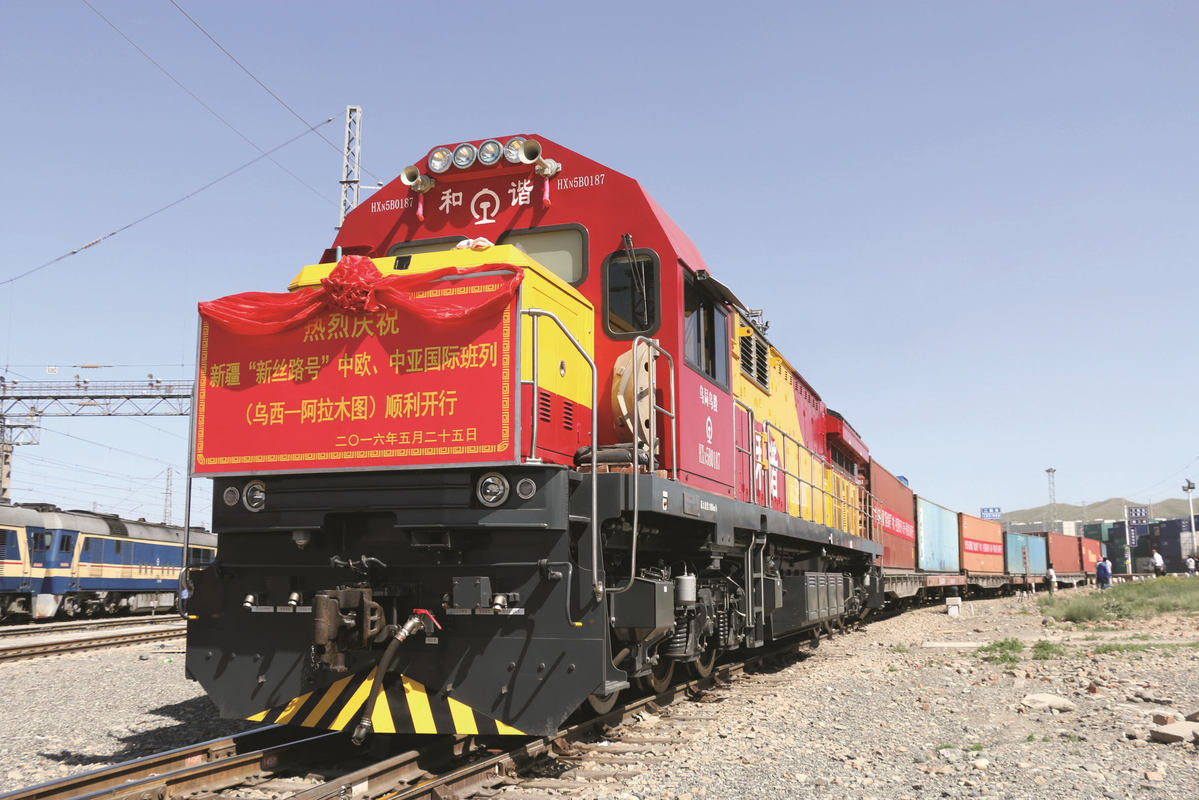
Horgos on the map
In a bid to transform Horgos into more than a glorified trans-continental truck stop, authorities have formed ambitious plans to develop the city.
One initiative is the Horgos International Border Cooperation Center – the world’s first cross-border free trade zone and the biggest duty-free shopping center in west China. Partly inside the Xinjiang Uyghur Autonomous Region of China and partly inside Kazakhstan, the Center is a neutral territory spanning 5.6 square kilometers.
On the Chinese side, five multi-story shopping complexes housing over 2,000 shops have been built along with commodity exhibition spaces, hotels, catering, entertainment, and financial services. Before the pandemic struck, the facility attracted more than 3.5 million visitors annually.
Surrounding the Horgos dry port and International Border Cooperation Center is the broader Horgos Special Economic Zone (SEZ). Measuring 73 square kilometers, the zone is larger than Manhattan. NYC. Favorable business policies including the gratuitous allocation of land plots, free rental space, and exemption from certain taxes — have attracted entrepreneurs from across China.
Ni Jianhua, a business owner from China’s Zhejiang province who moved to Horgos in 2006, has witnessed the city’s rapid transformation firsthand. “I never thought Horgos would develop into such a flourishing city in a dozen years,” he said.
Ni is known locally as one of Horgos’ greatest success stories. From an initial loan of 300,000 yuan (approximately $43,000), his toy business now reportedly turns over more than 100 million yuan ($15.6 million). When asked to comment on the city’s business potential, he quipped, “If you missed Shenzhen and Shanghai, you can’t miss Horgos.”
Given the speed of its development and the scope of opportunity, some have begun referring to Horgos as the “New Dubai”. Writing in Forbes, Wade Shepard noted that “an entirely new economy…made up of a plethora of different projects that all have synergy with each other” has emerged. We’re not talking about just a train station and some warehouses flung out on the Chinese border, he said, but the creation of an entirely new city.
Symbol of transformation
Call it what you will – Horgos, Khorgas, the New Dubai, or, the Second Asia-Europe Bridgeway – its story will remain the same. Lying almost baron for centuries, this once-forgotten land has had new life breathed into it and is now coming of age. Horgos’ story then is one of rebirth, hope, and transformation.
As a fast-growing international trade hub linking Asia and Europe, Horgos stands as a testament to the developmental forces contained within China’s Belt and Road Initiative.
 Facebook
Facebook
 Twitter
Twitter
 Linkedin
Linkedin
 Google +
Google +




